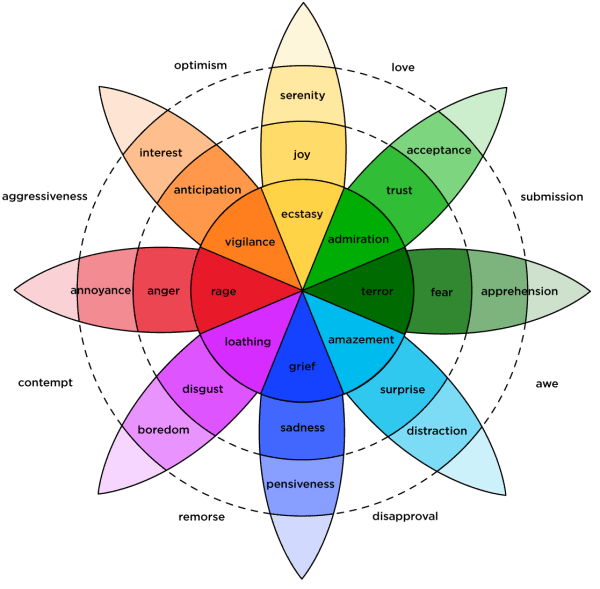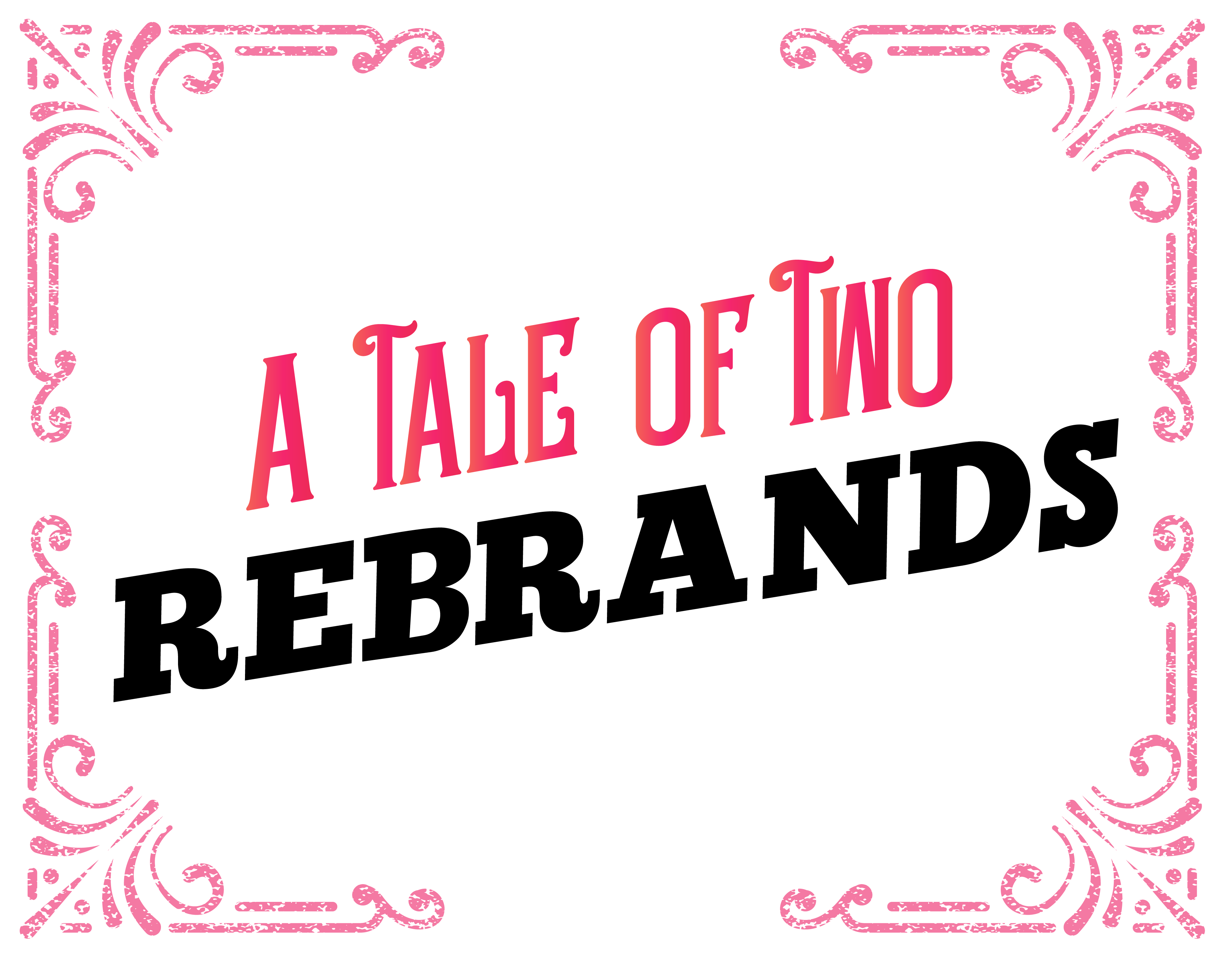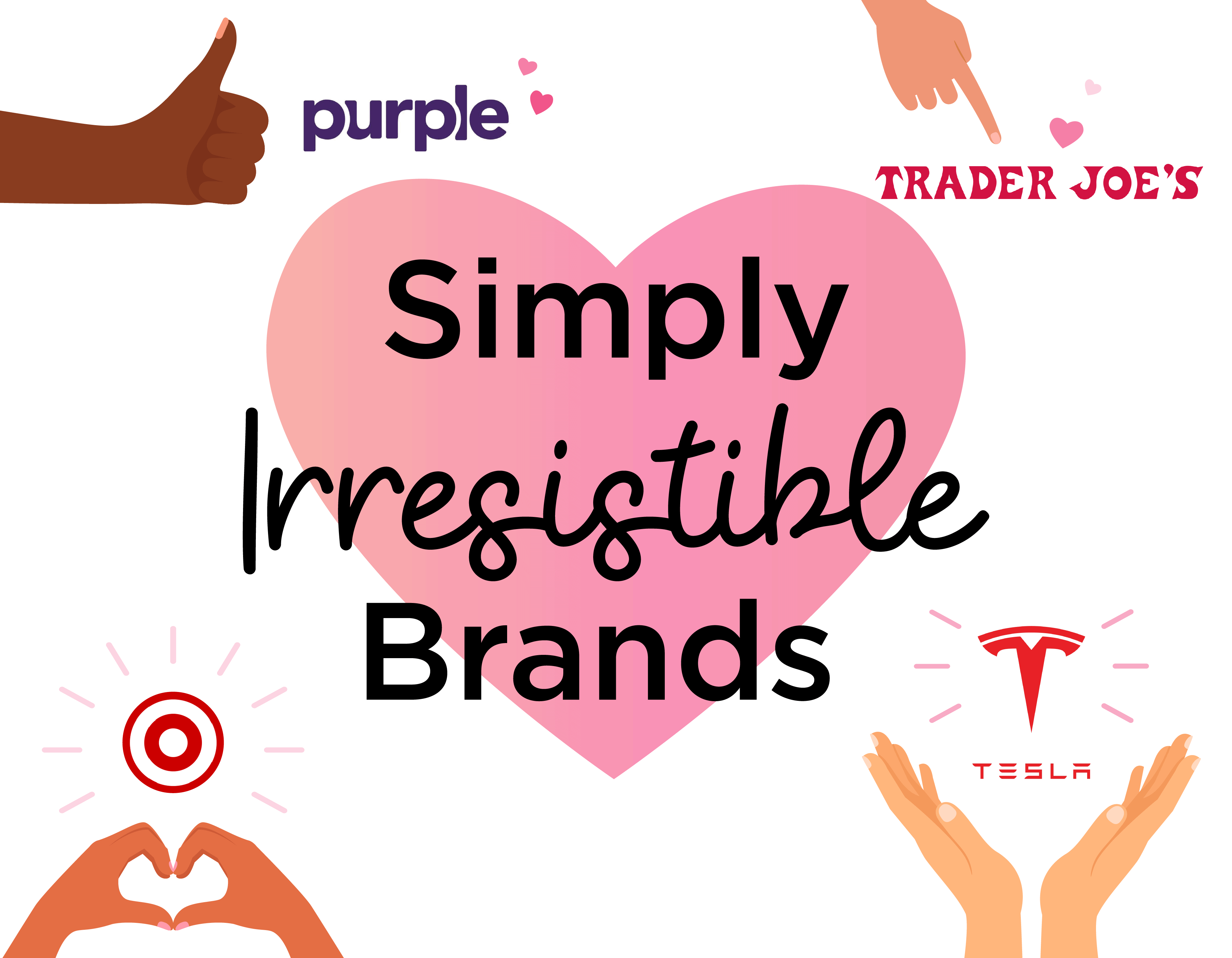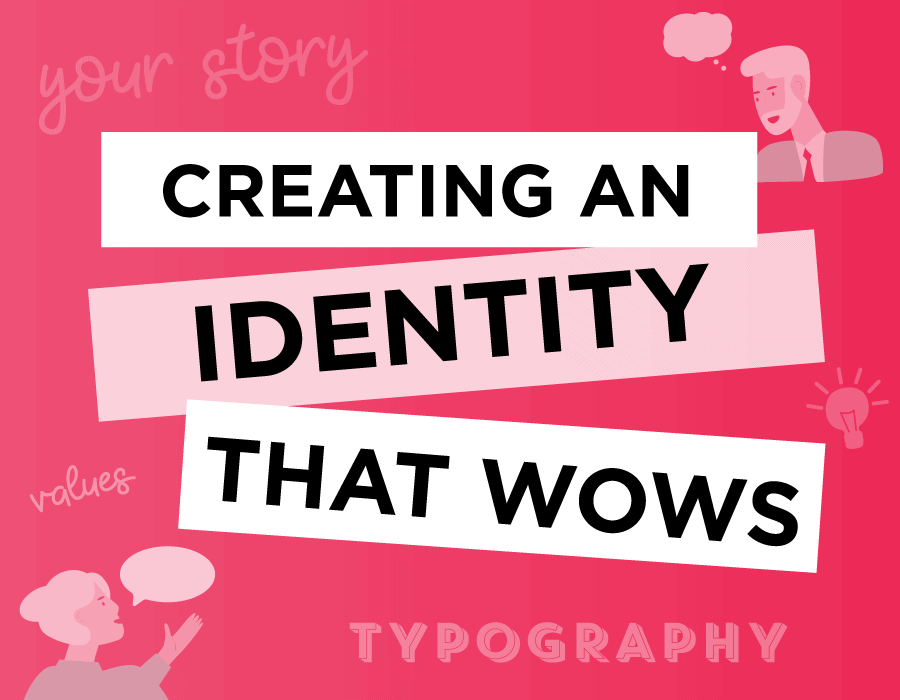How to Make a Brand People Love.
Brands do more than grow sales and the bottom line. Brands touch people emotionally. Brands need to communicate rationally too—facts, features, form and function. But when it really gets down to deciding to buy, the way a brand makes people feel is what they remember and act on. We call this brand love.
What’s in a Brand?
Branding isn’t just about the logo, colors or a catchy tagline like Nike’s “Just do it.” Branding works on a much deeper level. Brands make us feel.
Apple makes people feel creative and innovative. Amazon makes the shopping experience fun and personalized. Nike activates our desire to achieve, and celebrates issues like equity, girl power and the underdog. Each of these brands reflects who we are and how we perceive ourselves. When we hear “I love this brand!” that’s emotional magnetism at work.
Robert Plutchik’s “Wheel of Emotions”
Branding is a relationship based on an emotional connection to a story that resonates. Like strong relationships, brands build trust. They connect with our emotions. Robert Plutchik’s “wheel of emotions” illustrates many human emotions. And spoiler alert, these emotions trump the rational side of why we buy.

Here are 3 ways to make a brand that people love.
1. Brands Take a Stand.
Have a bold point of view. Customers connect when they have similar beliefs and values as your brand. To uncover what you stand for, start with why your company came to exist. What did you want to change in the industry, the category or the world?
Tesla makes great electric cars. Its mission is “to accelerate the world’s transition to alternative energy,” and the company builds cars that embody this mission. And because of the strength of its brand, the company naturally attracts customers and supporters who share its beliefs. On an emotional level, Tesla creates amazement (performance), admiration (good for the earth) and joy (radically simple). It also loathes (fossil fuels), is annoyed (with car maintenance) and is vigilant (in protecting the planet). Tesla enjoys premium brand status (and high profit margins) because it connects people to a story that is authentic and unique.

2. Brands Connect Experientially.
Think about all of the ways your brand interacts with your customer and brainstorm how you can strengthen those connections. The more associations you can create between your brand and your customer experience, the better.

Uniqlo, a portmanteau of “unique clothing,” opened its first store in Japan in 1984. Since then, the company has become world famous for being high-quality, innovative, functional and affordable. “You feel it instantly. So comfortable, so right, so you.” Uniqlo’s brand is built around the idea of LifeWear, clothes that create a better life for everyone, every day.
The Uniqlo brand conveys its belief in high standards and reasonable prices by collaborating with inspiring designers. Everything about Uniqlo supports its brand. Its stores are clean, orderly and calming. The packaging is simple and elegant. Its apparel is modern, sophisticated and artful. Even its logo, which resembles a red hanko signature stamp, emphasizes this feeling of quality and uniqueness. The appeal of its brand has allowed the company to expand from its Tokyo headquarters to Chicago, New York, Paris and 1,300 other locations around the world.
3. Brands Make An Emotional Impression.
Good brands are interesting. Better brands are memorable. Great brands connect to your emotions and change the way you live in the world.
One of my favorite brands is Warby Parker. Not only do they make great looking eyewear with a vintage feel, but they also make a difference with their “Buy a Pair, Give a Pair” program. Warby Parker donates a pair of glasses with every purchase. By purchasing a pair of glasses, customers can take a stand for affordable, quality eye care for everyone. The company has another program, Pupils Project, which provides students with free vision screenings, eye exams and prescription glasses.
To date, Warby Parker has donated more than 3 million pairs of glasses. After hearing this story, I bought into their mission and values (because I believe what they believe) and became a loyal customer and advocate of the brand.

Focus on what makes your brand unique.
People buy into missions and values that are authentic and meaningful. Think about why you started your company. What problems were you solving? How did you want to change the world? How far you have come? What hasn’t wavered from that humble beginning? What is your company and your team most passionate about?
To be successful in branding, you have to be human. Which emotions do you want people to feel? How can you bring these emotions into all of your touchpoints? What bold story do you want people to believe and share with others? By activating your brand’s beliefs and sharing your unique story, you can connect with your audience on a deeper, more personal way. And that’s what creates preference and loyalty for your brand.

Read “5 Steps to A Successful Rebrand” to find out what will make your brand stand apart from the competition. We layout a strategic roadmap that ensures your rebrand is lined up for success.

Elizabeth McKenna, CAE
Principal & Managing Partner
SAY HELLO.
Does your marketing plan rely on customer surveys to identify relevant programs, services and communication channels?
From blind industry surveys to customer satisfaction surveys, we can develop turnkey surveys delivering qualitative and quantitative insights to increase program engagement and loyalty.
Disclaimer: This blog is for educational purposes. Under Fair Use and Freedom of Expression of U.S Copyright Law, we may use images, video, and other media to provide comments, news reporting, scholarship, teaching and research. Registered trademarks and copywritten material are individually owned and do not imply an endorsement.




